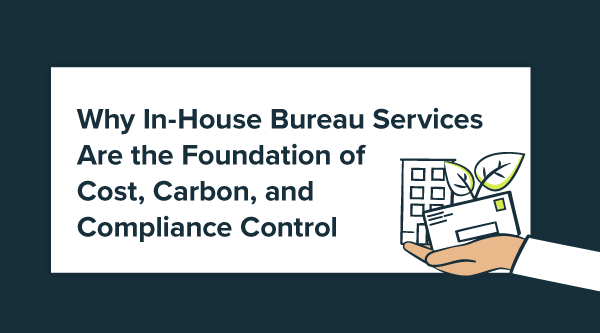Complexities in Achieving Deep Decarbonization
We’ve assessed and examined why moderate and incremental approaches are simply no longer viable solutions to climate change, and explored why deep decarbonization is clearly an urgent necessity. But what are the challenges we face as we approach this daunting task? Similar to the branches of society itself, deep decarbonization presents numerous complexities to navigate. With such a radical, transformative process, there are undoubtedly numerous risks to consider– a balancing act between the different sectors.
The implementation of deep decarbonization quickly becomes a puzzle of risk governance. Because of the intricate level of complexity between the various layers involved, and the groundbreaking nature of new policies and technology working together, small setbacks and disturbances will initially tend to have a bigger ripple effect throughout the entire system, leading to a sense of relative unpredictability. For example, in less privileged communities or developing economies, there are significant societal and economic needs that must be met despite the urgency of the decarbonization transition, especially within the energy sector. A comprehensive shift toward deep decarbonization in such a situation could come at the cost of ensuring a certain level of stability, as energy sources change, and the flow of goods and services is affected.
Similarly, areas with volatile weather patterns and ecosystems may not necessarily be able to rely upon a consistent source of green energy like solar or wind across the board for long periods of time, and their policies would have to maintain a remarkable level of flexibility. They may even require situational switches between varying sources of energy and fuel. This also presents the unique challenge of how the organizations in these areas will be able to sustainably and viably store large amounts of clean energy to meet the needs of the population and industries there.
Perhaps one of the most significant obstacles of all lies within the agricultural sector of deep decarbonization, because carbon emissions seem to dominate every step of the process from farm to consumer. Cattle farms, for example, are significant point sources of methane emissions, an extremely potent greenhouse gas. And even still, the meat production, packaging, transportation, and sale processes each involve a significant amount of carbon emissions to some extent. Deeply decarbonizing this industry would require an immense amount of collaboration to reinvent the entire supply chain from front to back.
The agricultural sector makes it quite clear why it is easy to become trapped in the confines of moderate decarbonization efforts. The sheer level of complexity has to be addressed carefully, and at this time, there is minimal incentive to reach as far or deeply as is necessary. The main roadblock that all entities face is access to sufficient, real-time datasets from every emissions scope. Too many companies and organizations are without the ability to automatically and systematically gather relevant data that helps them make informed decisions about their climatic impact– especially Scope 3 emissions. It is far more financially and functionally feasible to tackle Scope 1 or Scope 2 emissions with, for instance, an annual dataset each year in an incremental capacity than attempt to take an all-encompassing, real-time, deep decarbonization approach.
Given the numerous and complex challenges involved, what will it take to make deep decarbonization a widespread reality? First and foremost, collaboration and transparent communication between institutions, governmental and otherwise, is paramount to the success of deep decarbonization. This may come in the form of frequent meetings between key members and interest groups, an interdisciplinary committee, and/or heightened accountability and reporting between all branches involved. It is clear that simple, short-term, incentivized programs are not enough to solve the emissions problem– authorities in all sectors need to implement decisive policies and action to drive change.
Additionally, annual, manually collected data is not sufficient for executives to make the necessary decisions. Access to real-time, automated, and organized data on emissions is required in order to reduce Scope 1, 2, and 3 emissions. Finally, normalizing and increasing transparent environmental reporting from companies and governments is a relatively easy and natural way to foster deep decarbonization with a shared sense of accountability. This practice is already becoming more common, and is a key aspect of promoting the urgency of addressing climate concerns.
Deep Decarbonization Initiatives for Businesses
Businesses are undoubtedly critical to the widespread implementation of deep decarbonization initiatives. Because economic incentive policies on their own lack the gumption needed to accomplish meaningful climate goals, the motivation to improve emissions across the systems and processes within a company needs to arise intrinsically, embracing the long-term competitive advantage that decarbonization offers. Many businesses are already starting to think this way: decarbonization is the future of not just the health of the planet, but the success of industries as well. Emissions reduction can’t be just one consideration of a company’s decisions, but at the forefront of every decision. This is deep decarbonization in action.
Before you can initiate decarbonization effectively, you must understand precisely what drives emissions for your business. It’s important to critically address each scope of emissions individually and intentionally.
In terms of Scope 1, assess what actions of your company directly cause emissions, and how you can specifically quantify and address these point-sources. For Scope 2, examine where your operations draw energy from, and how well you can implement renewable sources, replacing emissions-driven power and heating. Scope 3 emissions present a unique challenge in that they are the most diverse category, yet often represent a majority of emissions resulting from a company’s actions via upstream and downstream activities in the value chain. This may include, but is not limited to; emissions from the consumption of a product / end of life, travel done by employees, transportation within the supply chain, waste disposal, and purchased goods and services. With the proper decarbonization solutions and resources, you can understand and precisely manage each area of emissions within your organization.
Fortunately, there is a simple way for you to examine your business’ energy efficiency and opportunities for renewable energy adoption, especially if data acquisition and analytics are your main roadblock. With the SmartAnalytics tool offered by EnergyCAP, numerous devices and platforms can be connected, streamlining data analysis for increased energy efficiency. You’ll be able to make informed decisions about areas of improvement and renewable energy opportunities relevant to your industry. But how can emissions be addressed for Scope 1 and 3? The challenge still remains– relevant and accessible data regarding emissions up and down the supply chain. Indeed there are many factors and calculations involved that make the process of supply chain optimization for emissions reduction seem daunting.
There is good news– EnergyCAP also has an invaluable tool that makes this possible, enabling you and your organization to take immediate action to address the climate crisis. The EnergyCAP CarbonHub accounting tool makes it easier than ever to combat the challenges previously inhibiting emissions control. It provides simple data tracking and automates analysis of Scope 1, 2, and 3 greenhouse gas emissions. The number one challenge of addressing emissions as reported by businesses was access to real-time, relevant data. With these innovative decarbonization solutions available, there’s nothing that stands in the way of meaningful emissions reduction within your organization.
Deep Decarbonization Technology and Solutions
Having the decarbonization tools necessary for success is just the beginning of something much greater. Aligning with the goals of deep decarbonization requires an industry-wide, cultural shift toward sustainably-oriented priorities, collaborating toward a common goal. This has already begun, with ESG increasingly governing the values and decisions of shareholders, and in turn, the executive decisions of corporations. Deep decarbonization initiatives require partnerships and communication between policymakers, key community institutions, sustainability experts, and businesses. Some companies are already showing this is possible, utilizing their influence to enact changes up and down their supply chain. For example, Danone North America recognized that the bulk of its emissions were a result of carbon-heavy farming practices. Armed with this information, they joined hands with the National Fish and Wildlife Foundation to generate 3 million dollars of federal funding for farmers to enact net-zero carbon practices. The research, communication, and partnership displayed here show that scaling deep decarbonization is incredibly feasible with the right knowledge and resources.
EnergyCAP provides the tools to encourage this sort of action, closing the gap between policymakers, environmental researchers, and businesses. With the framework provided by SmartAnalytics, companies can align their goals with the net-zero targets and specifications outlined by experts and policymakers. Tools like this one are a major key to transforming deep decarbonization from a concept into a powerful reality that shapes the future of our climate.
Get in touch with EnergyCAP today to see how you and your business can be a part of the deep decarbonization movement.
Best-in-class portfolio-level energy and utility bill data management and reporting.
Real-time energy and sustainability analytics for high-performance, net-zero buildings.
A holistic view of financial-grade scope 1, 2, and 3 carbon emissions data across your entire business.
Energy and sustainability benchmarking compliance software designed for utilities.






